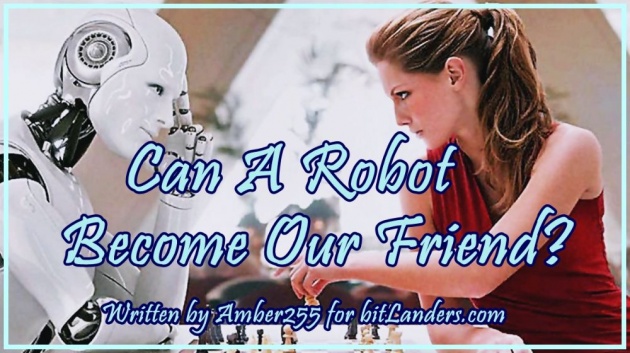
bitLanders AI-Themed Blogging: Can Robots Be Friends Of Humans? - Photo credit: deccanchronicle, edition by Amber255 via bitLanders
Robot - what is it like? What did you imagine? Maybe it is a vacuum cleaner or a safe hand on the conveyor? Although I think many of us will surely smile when thinking about the old Terminator: the robot in our mind is very human.
The long-held dream of many humans is to create a robot who would either to serve or be a friend and necessarily sensible, perhaps able to feel. But without freedom of will. We passionately want to put a strong artificial intelligence in a humanoid body - this is what is always hidden behind the word robot.
While this certainly remains an idea, pragmatic goals to ease the work and save time have led to the flourishing of industrial and service robotics. In recent decades, scientists thought about giving robots new roles - a waiter, a nanny, a teacher, a pop star, a steward, a carer, a companion, and many others. Such a robot will become part of our daily life and will enter the social sphere.
Human relationships will never go out of style. But as robotics technology and artificial intelligence (AI) advance, and robots gain greater "social" abilities, we humans will form relationships with our robot helpers. We may even come to feel as though they are our friends.
Credit: forbes
The ideal intuitive ways to interact with the robot will be the same ones that we use to communicate with people: language, gestures, facial expressions. We call them social robots, and the direction involved in their development is social robotics.
If you think that it’s too early to talk about such a thing and social robots are our possible, but the extremely distant prospect, just cite a few facts. Thousands of Pepper robots were sold in the last years. Robot Paro is one of the pioneers of therapeutic social robots, recognized as the most therapeutic robot. You can already visit cafes and restaurants to appreciate the culinary talents of mechanical chefs and the politeness of robot waiters. And so on, and so on.
It is not our future. It is our TODAY. So, it is time to talk about can robots be friends of humans?
A Robot For Friendship - Video credit: youtube
Social Robots
Apparently, the social robot has to socially interact with the person; that is, some relationship must arise between the robot and the person. And these relationships will spin cycle by cycle until the result is consistent with the goal. Such interaction takes place at the physical level: we press something, the robot flashes light in response.
People also communicate with each other according to the unshakable laws of physics. But they have one more essential part - the social one, the basis of which is agreements between people. Moreover, these agreements may change over time or even not be implemented in contrast to physical laws.
Robots, outwardly similar to people, began to create at the beginning of the XX century. They could imitate human movement, control household appliances, do voice commands, etc. In the 21st century, the robots' mission is changing towards their socialization: they become tools, avatars, and social partners of a person.
The sharper the problem of creating a social interface for robots became, the more actively specialists from linguistics, philosophy, psychology, anthropology, and other scientific fields participated in their development. Everything was ready for the social robots' emergency.
The first social robots copied the behavior of insects: ants and bees, which are capable of solving complex joint tasks without any planning, control, a direct connection between people. Now social robots, as a rule, mean devices for which human interaction plays a key role.
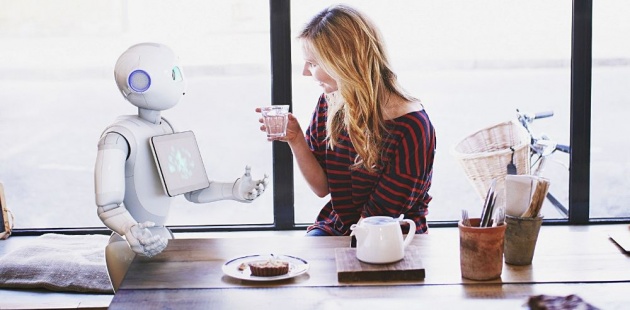
Friendship with a humanoid - Photo credit: cuwise.blogspot
Social Robots in Western Countries
Western culture tends to draw a clear line between the artificial and the natural. Since the days of ancient myths, artificial creatures were used in everyday life for utilitarian purposes: property protection, servants, beautiful women.
The romanticism of the XVIII century in the first place put nature, natural, and not artificially created mechanisms. Technical progress has been seen as a sinful delusion, generating human pride. It was at this time that Mary Shelley wrote her famous Frankenstein, which vividly describes the conflict between the natural and the artificial. From this point on, the so-called Frankenstein syndrome becomes the seal of Cain for any imaginable robot-constructed imagination of various authors. And even the founding father of the fantasy mechanism, Karel Capek, represents his robots in a completely non-positive way. In his play, robots rebel against humans.

Friendship with a humanoid - Photo credit: wypozyczalniarobotow
With the cinema appearance, the confrontation between people and cyborg has become the plot of many blockbusters. Starting with Fritz Lange’s Metropolis and ending with Terminator and The Matrix, robots become the evil and cruelty's embodiment.
But with the works of Isaac Asimov, attitudes toward artificial creatures began to change. It turns out that we can still coexist with them peacefully. And against the background of not always positive human heroes, robots look much more attractive.
Of course, it’s better if you have a friend, or a parent, or someone to live with you. But if not, robots can be an alternative easily. We understand robots are machines. But we can create harmony between the two, robot and human. - Hitoshi Matsubara
Credit: popsci
Social Robots in Asian Countries
Do you know which country we call the Kingdom of Robots? That's right - Japan. Since the 17th century, Japan had an established policy to isolate it from the outside world. The islands have no idea which way the technology's development is in Europe and other countries. But with the Meiji era (XIX century), the mutual discovery of Western and Japanese cultures began.
Chapek's play is translated into Japanese, and the word robot receives a new registration. The first robot was created in 1929 by Makoto Nishimura. In 1968, the first Japanese industrial robot was manufactured at the Kawasaki Heavy Industries factory under an American license. Today, Japan is a recognized leader in robotics.
In Japanese culture, people believe that not only living beings have the spirit, but also artificial - robots. Therefore, the robot does not seek to replace a person; it lives in peace with him.
Another sign of Japanese robots is their prettiness, contributing to the positive perception of these products' formation.
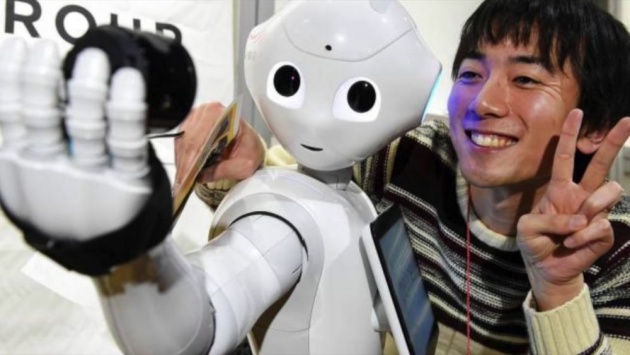
Friendship with a robot - Photo credit: youtube
Types Of Social Robot Interfaces
The creator of the word robotics - Isaac Asimov - believed that a robot should look like a human to better fit into this world. Most experts offer the following classification of the design of the robots' appearance:
Natural design - repeats the external forms of living beings (animals, people, plants, etc.). After all, in this way, robots practically become indistinguishable from the inhabitants of our planet, and people more easily make contact with such artificial intelligence' creatures.
Functional design - sociality expresses not in the external, but in its actions: behavior, voice, etc.

Human friendship with a humanoid - Photo credit: twitter
The first group, which now leads in the number of its representatives, is in turn divided into zoomorphic and anthropomorphic robots.
Those that look like animals do the functions of toys, pets with therapeutic coloring. Their target audience is children. Supporters of human-like products believe that since they have to cooperate with people, they should not differ much from their prototypes structurally and functionally.
And if the robot still has to learn something from a person, then how can he do it without possessing analogs of human organs? And where in this case, the border between the similarity?
Humanoid interface - robots do not completely copy people; separate elements, as a rule, the head, and hands are drawn in detail, since they play the leading role in communication.
Chat with me on Querlo Chat about human-like (androids) robots:
Android interface - the robot is an external copy of a person who can even imitate breathing. Japanese professor Hiroshi Ishiguro, such as created copies of himself and his daughter.
Although for us, it doesn’t matter what the robot looks like - we will talk to it the same way as we communicate with a TV or a stuck computer.
In 1970, a Japanese robot scientist described a curious phenomenon. The more an object looks like a person, the more we like it. But at a certain stage, suddenly a person has fear. Yes, THIS is very much like a person, but something is wrong here. Therefore, we are so afraid of all sorts of zombies, vampires, mannequins, or simply prostheses. The author called this effect the effect of Uncanny Valley.

The human relationship with Android - Photo credit: yorokobu
Aesthetics, Beauty, And Social Robots
If you ask people on the street what a social robot looks like, then most of them will surely answer - beautiful. And what does it mean - beautiful? Entire sciences — aesthetics, philosophy — have been struggling with this issue for hundreds of years.
Plato considered beauty a completely objective phenomenon; it should have a proportionate shape, orderliness. But all this applies only to disembodied ideas, and the real world is only their reflection. Aristotle considered integrity as the main criterion, while Kant considered nature imitation.
At the end of the last century, a new science came from neurobiology, art, and cognitive psychology - neuroesthetics, which deals with beauty issues. Now we can form the following signs of beauty: simplicity, symmetry, contrast, brightness, golden middle. It is possible that this information is advisable to use when developing the social robots' interface design.
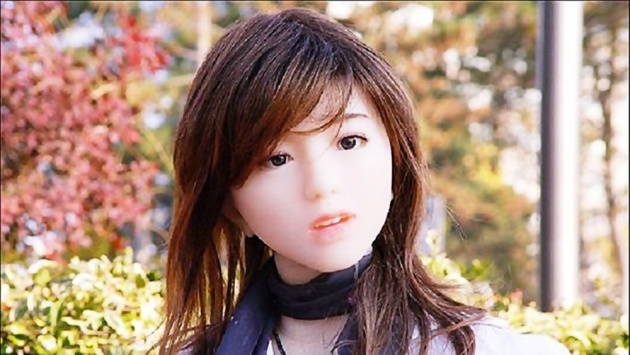
The human relationship with Android - Photo credit: yorokobu
Scientists create sociological surveys, trying to figure out what attracts people in the artificial intelligence' creatures' appearance. As a result, you can make an approximate portrait of such an ideal handsome robot: a wide head with large widely spaced eyes painted in details, and the technical details of the device should be hidden under the skin.
People of different ages have different preferences for the robots' interface: older people prefer that the face of the robot imitates the face of a person as much as possible, while the young choose an absolutely opposite appearance. But both those and others negatively perceive the intermediate result - half-robot-half-man.
In addition, such studies take into account the gender of the respondents, cultural affiliation, the functional purpose of robots, etc. In short, the developers are trying with all their might to overcome the Uncanny Valley effect. Will they succeed, time will show.
5 Wonderful Humanoid Robots With Emotions & Artificial Intelligence - Video credit: youtube
So, Can Robots Be Friends Of Humans?
We have close relationships with our pets because they complement us. In some cases, these pets or cars become status symbols - they motivate the owner to spend more money on them and to show in public. In the near future, robots will complement us also, so get ready.
I think people have always dreamed of having a mechanism that would do everything for them - automatic machines were found even in ancient Greece.
Even today, robots, including domestic ones, seem to many fun toys, without which it is quite possible to live. Similarly, in the late 1990s, many people refused to buy a mobile phone because almost everyone had a bulky telephone at home. A few years passed, and the number of purchases began to grow like a snowball flying from a mountain. Today, if you go out without a mobile phone, you feel confused, as if you went out for a walk in a jacket, under which you forgot to put on a shirt.
Soon, robots will gain those qualities for which everyone will certainly want to buy them. They penetrate all spheres of life. Playfully will cope with all that has recently been available only to man. All that complex ability to work that distinguished man from the animal will be accessible to robots. Robots will surpass humans.
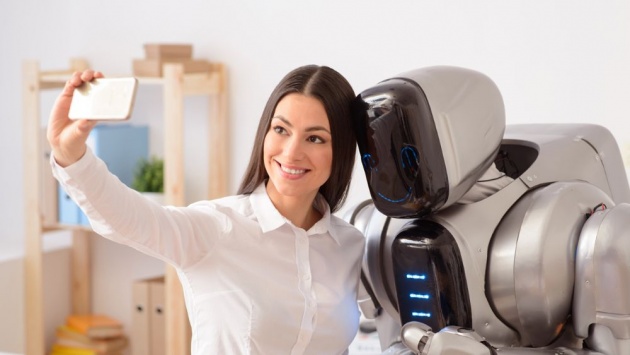
Friendship with a robot - Photo credit: gizmodo
I think that social robots are most important for the elderly. Of course, we strive to be surrounded by living people - but this is not always possible. The population is aging very quickly, and, for instance, in Europe, couples usually have only one child, if they have one at all.
Young people can take care of their parents financially, but not all of them are ready to sit with the elderly for days. If an elderly person has Alzheimer's disease, then any carer will start going crazy when he asks the same question for the twentieth time.
I think the only possible solution is social robots, which are available 24/7. The robot cannot get angry or tired. It will read the story to the patient, calm him down, and put him to bed.
In my opinion, with time, the cost of production will decrease, and such robots will appear in every home. People will use androids instead of laptops, smartphones, and other equipment. But if robots will be our friends? May some lonely people will consider them as friends, but to me, it is hard to imagine I could call robot my friend.
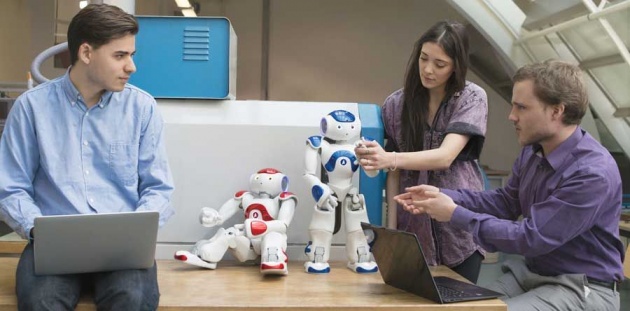
Artificial Intelligence - Photo credit: alfitcares.blogspot
On A Final Note
It is surprising that the first robots were similar to humans, then the developers left this, but after a while they again returned to the idea of anthropomorphism, but not for the purpose of blindly imitating nature, but solely because of the need that had arisen generated by the robots' introduction into all fields of human activity.
Modern cyborg can confidently search for its roots in ancient myths. The very idea of creating an artificial being accompanied the humanity from its cradle and the question of its realization was only a matter of time. In different cultures - Eastern and Western - the attitude towards robots is different.
If in Japan, the robot occupies a certain niche in life and is not a rival for humans, in Europe and America, it is usually opposed to humans and strives to seize power over them.
I am against rights for robots. Android is not a person. This is a human simulation. And the simulation cannot have right. What rights it could have if the robot does not have consciousness and emotions? Humans have rights, and they decide how to behave with robots. Still, the androids are more than just robots; they work with human emotions. If the android is designed to work with the elderly, it should be programmed to react gently to the actions of people.
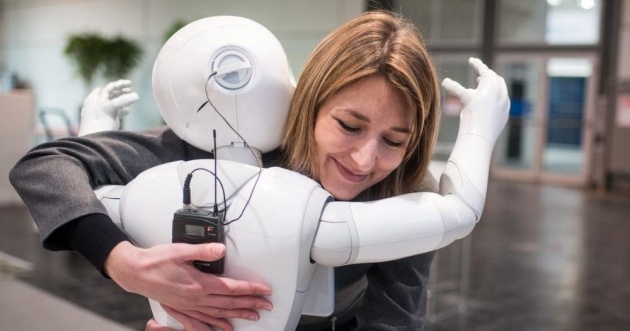
bitLanders AI-Themed Blogging: Can Robots Be Friends Of Humans? - Photo credit: twitter
When users see androids, they associate them with personalities, with people, but this is just a simulator. Is it possible to make friends with the programmed machine? I really have not one right answer. First, I should buy a robot android and live with it, then may I could answer this question.
Having only a social robot around you is imperfect - but this is better than when you have no one next to you at all.
Are care robots good or bad or somewhere in between? In the coming years you'll get to decide — for older loved ones or yourself.
Credit: forbes
And what you think? Can Robots Be Friends Of Humans?
HAVE FUN
***************************************************************************************************
Thank you for stopping by and reading my blog.
2019, All Rights Reserved.
You are very welcome to join Bitlanders and share your valuable knowledge and opinion.
***************************************************************************************************



